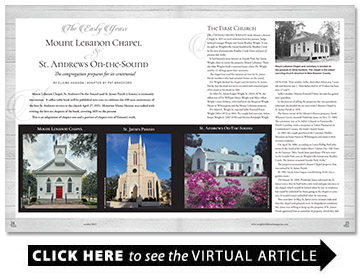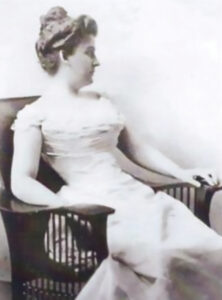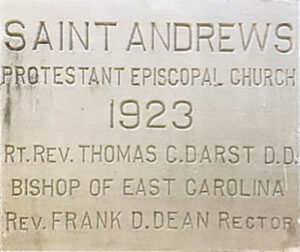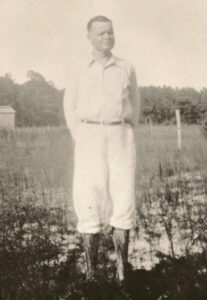Mount Lebanon Chapel and St. Andrews On-the-Sound: The Early Years
The congregation prepares for its centennial
BY Elaine Henson | Adapted by Pat Bradford
![1970s St. Andrew's azaleas[47] St. James Parish St. Andrews On-The-Sound. St. Andrews on-the-Sound archives](https://wrightsvillebeachmagazine.com/wp-content/uploads/2023/09/1970s-St.-Andrews-azaleas47-1024x724.jpg)
Mount Lebanon Chapel, St. Andrews On-the-Sound (and St. James Parish’s) history is intimately interwoven. A coffee-table book will be published next year to celebrate the 100-year anniversary of the first St. Andrews service in the church April 27, 1923. Historian Elaine Henson was tasked with writing the first six chapters of the book, covering 1835 to the present.
This is an adaptation of chapter one and a portion of chapter two of Henson’s work.
The First Church
Dr. Thomas Henry Wright built Mount Lebanon Chapel in 1835 on land inherited from his parents, Judge Joshua Grainger Wright and Susan Bradley Wright. It was located on Wrightsville Sound bordered by Bradley Creek in the area of present-day Bradley Creek Point and part of present-day Airlie.
It had formerly been known as Seaside Park, but Susan Wright chose to name the property Mount Lebanon. There the elder Wrights built a summer home where Dr. Wright and his 12 siblings spent their summers.
The chapel was used for summer services by St. James Parish members who had summer homes on the sound.
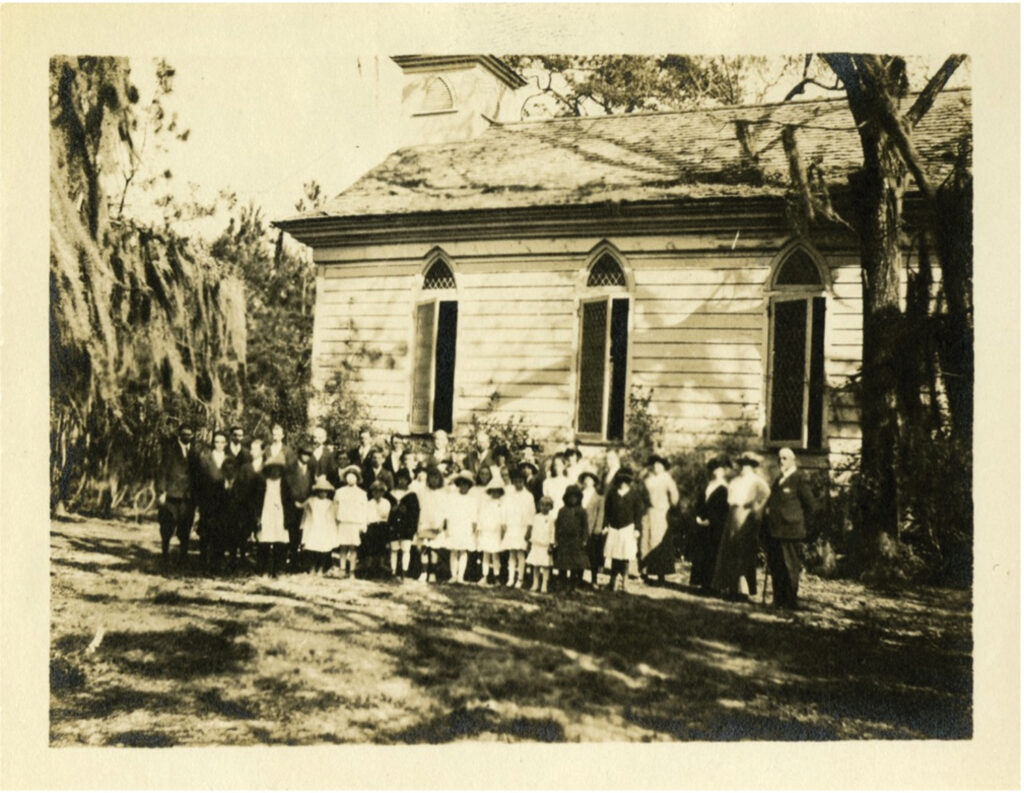
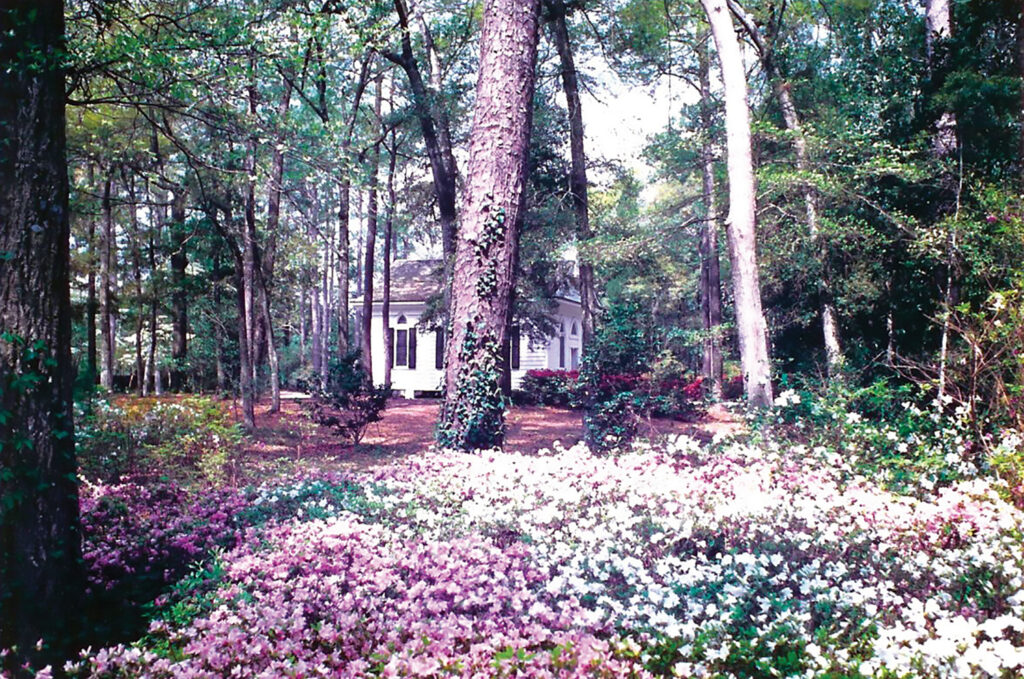
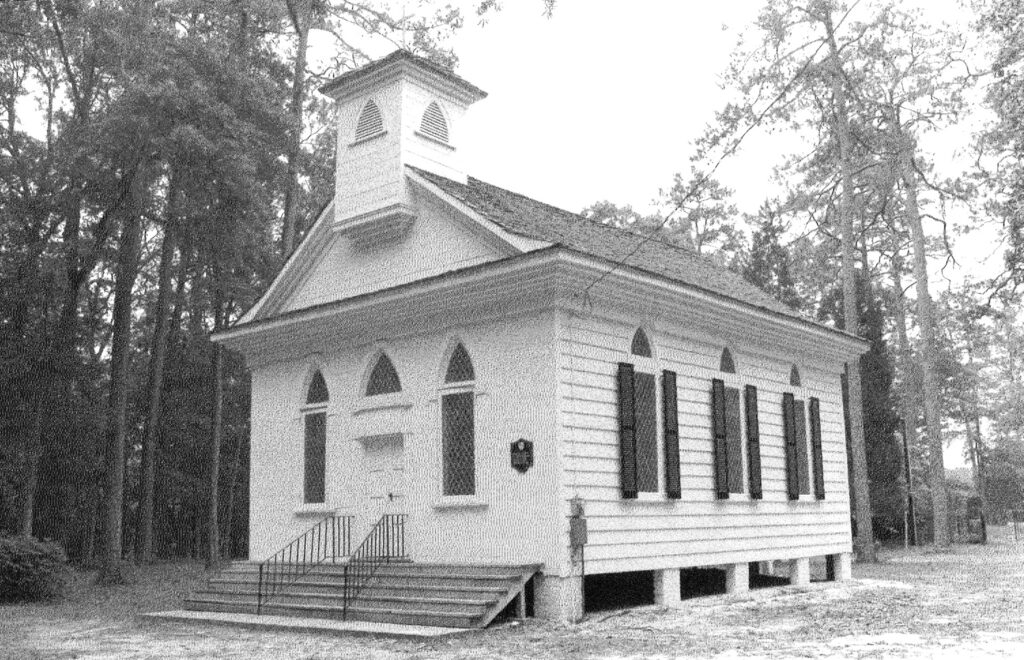
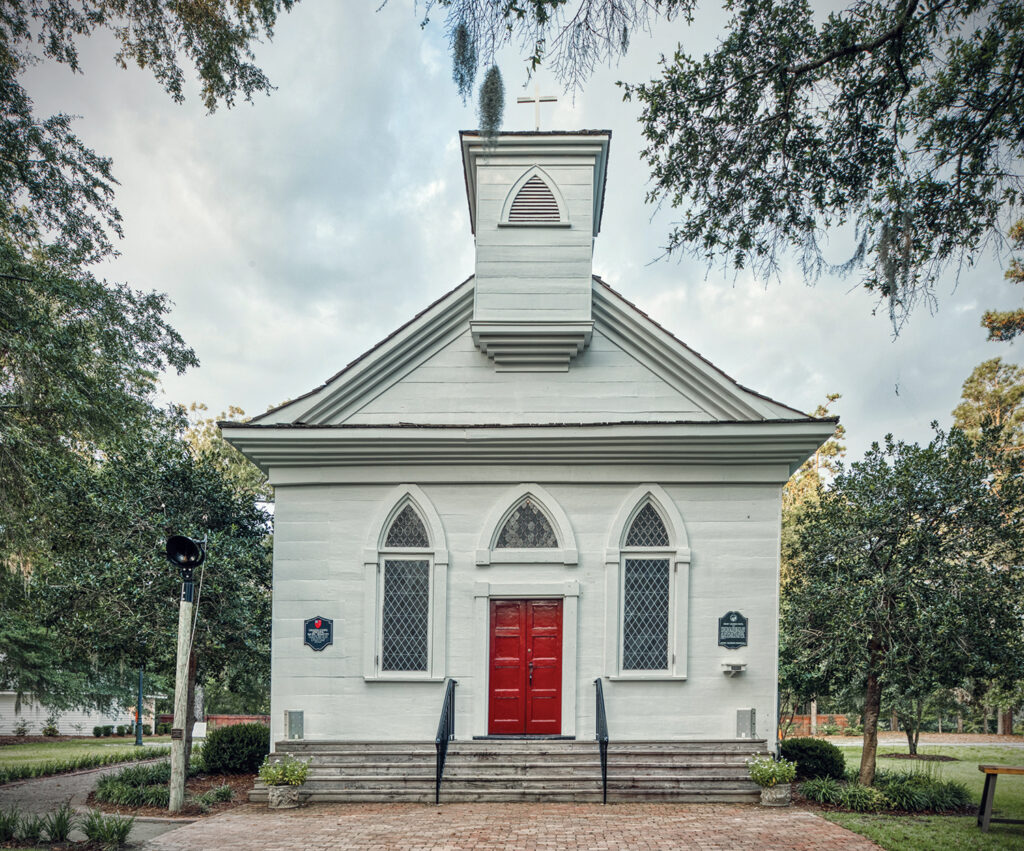
Dr. Wright deeded the chapel and the land to St. James Parish, but the deed was never recorded and remained part of his estate at his death in 1861.
In 1866 Dr. Adam Empie Wright Sr. (1833-1879), the oldest son of Dr. William Henry Wright and Mary Allan Wright’s nine children, inherited both the Burgwin-Wright House in Wilmington and the Mount Lebanon property.
Dr. Adam E. Wright Sr. married Sallie Fotterall Potter Wright (1844-1872) in 1864. The couple had two sons, Adam Empie Wright Jr. (1867-1945) and Marion Randolph Wright (1870-1914). Their mother, Sallie, died when Adam was 5 years old and Marion was 2. Their father died in 1879 when the boys were 12 and 9.
Sallie’s mother, Marion Fotterall Potter, became her grandsons’ guardian.
In the process of selling the properties her two grandsons inherited, she deeded the six acres with Lebanon Chapel to St. James Parish in 1876.
The future owner of the Mount Lebanon property, Sarah Wharton Green, married Pembroke Jones on Nov. 27, 1884. The ceremony was at St. John’s Church in Fayetteville, North Carolina, with a reception at Tokay Plantation in Cumberland County, the bride’s family home.
In 1885, the couple purchased the Governor Dudley Mansion on Front Street in Wilmington and made it their in-town residence.
On April 26, 1886, according to Lewis Phillip Hall who wrote in the Land of the Golden River: Volume One, Old Times on the Seacoast, “Mrs. Sarah Jones purchases 150-acre tract in the Seaside Park area on Wrightsville Sound near Bradley Creek. The Joneses renamed Seaside Park, Airlie.”
The property surrounded Lebanon Chapel property that was owned by St. James Parish.
By 1902 Sarah Jones began transforming Airlie into a garden estate.
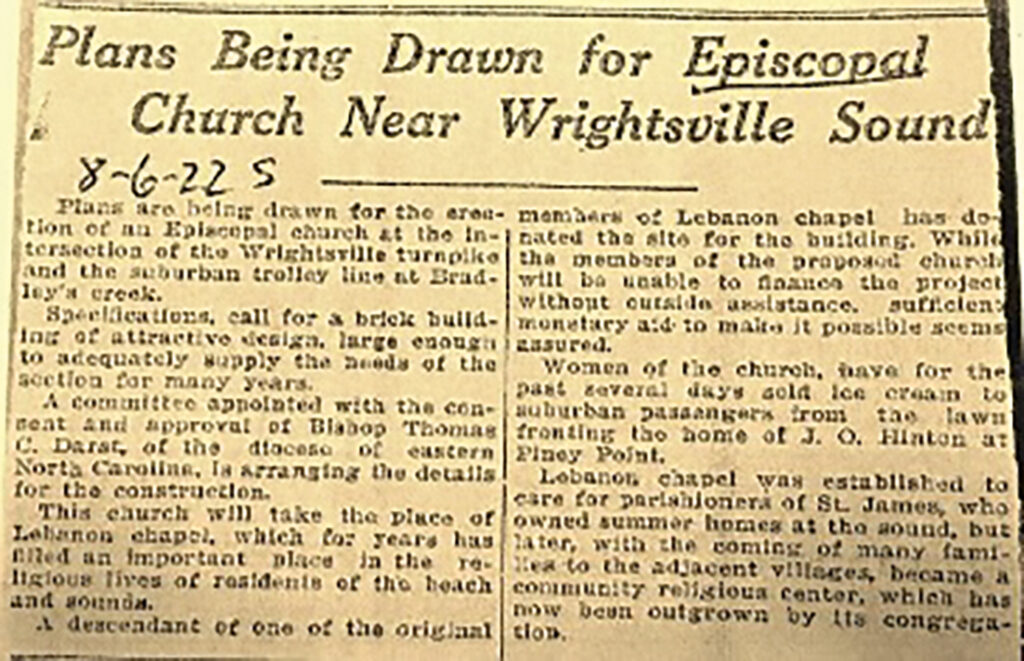
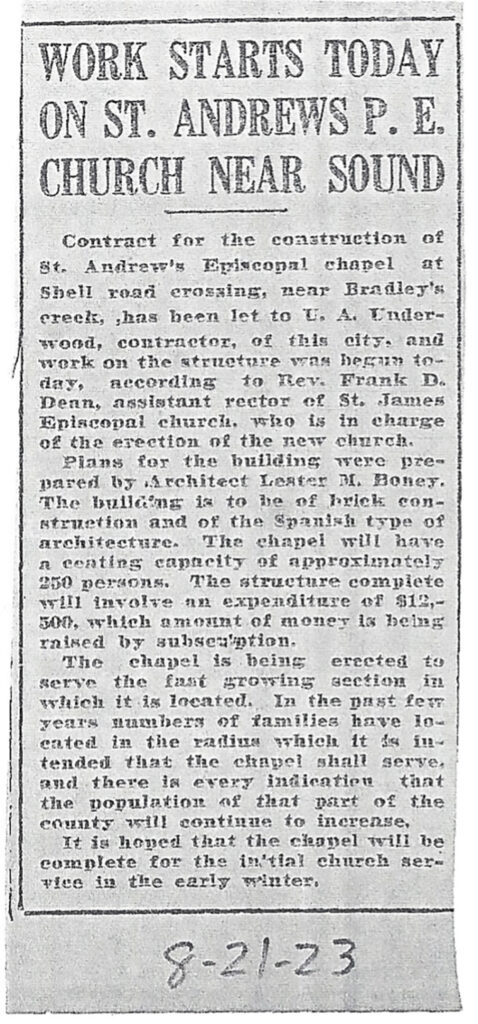
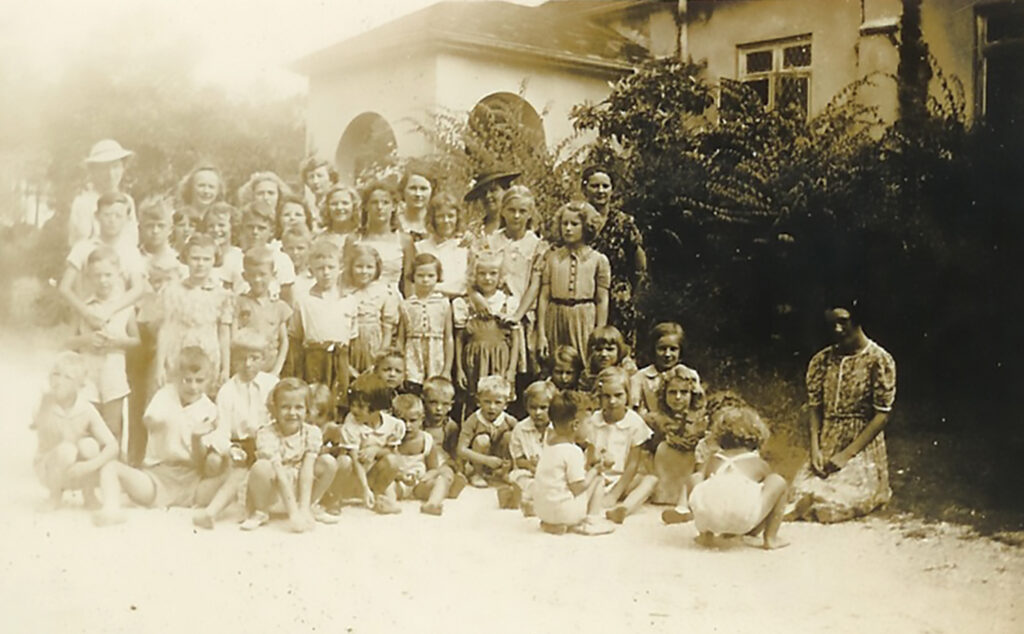
On March 20, 1906, Pembroke Jones informed the St. James vestry that he had built a new road and gate entrance to the chapel, which would be locked when he was in residence, but could be unlocked for those going to the chapel or cemetery. It would remain unlocked when he was away.
Two years later in May, St. James vestry minutes indicated that the chapel and grounds were in dilapidated condition. Mr. Jones was willing to keep up the property if St. James Parish appointed him as custodian of property, which they did.
Pembroke Jones made extensive improvements to Lebanon for his daughter Sadie Jones’s wedding to John Russell Pope on May 11, 1909.
Anson Alligood, a member of the St. James vestry, requested permission on Nov. 6, 1912, to use the chapel for services and a Sunday School led by himself, Thomas Morton, and other members of the St. James Parish chapter of the Brotherhood of St. Andrew.
Wrightsville Sound residents known as “Sounders” began attending the Sunday School at Lebanon Chapel in 1913. Anson Alligood asked St. James vestry for hymnals for the services and Sunday School at Lebanon. This group would form the congregation that became St. Andrews Chapel in 1923-1924. The vestry agreed to construct a brick chimney at Lebanon not to exceed $45 at the request of Alligood.
In 1915 the Rt. Rev. Thomas Campbell Darst became the third Bishop of the Diocese of East Carolina succeeding Bishop Robert Strange. Bishop Darst was a huge supporter of the Lebanon Chapel mission and preached there many times before the congregation moved to the church on the corner of Oleander Drive and Airlie Road. He retired in 1945, died in 1948, and is buried at Oakdale Cemetery.
Wilmington native the Rt. Rev. Robert Strange served as the second Bishop of the Diocese of East Carolina from 1905 to 1915. He succeeded Bishop Alfred A. Watson and is buried in Oakdale Cemetery.
The Rt. Rev. Alfred Augustin Watson was the first Bishop of East Carolina, consecrated in 1884. He died in office in 1905 and is buried at Oakdale Cemetery.
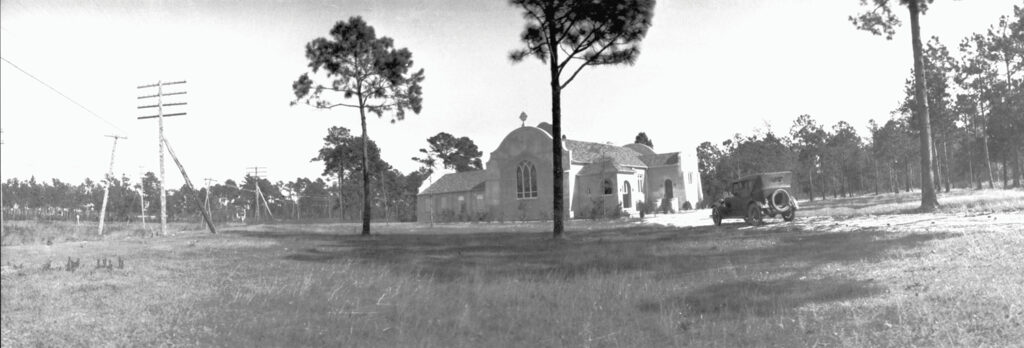
The diocesan office was in Wilmington and all the bishops lived in Wilmington. However, to be more centrally located it was moved to Kinston, North Carolina, in 1983.
There were 56 confirmations at Mount Lebanon Chapel from 1915 to 1922 by Bishop Darst. The list includes many of the original members of what became St. Andrews Chapel and is now St. Andrews On-the-Sound.
In a quote from St. James vestry minutes June 17, 1916, Anson Alligood stated that he “had been requested to ascertain the sentiments of the vestry toward accepting a new chapel to be erected at no cost to the parish upon a site to be approved by the vestry in exchange for the present Mt. Lebanon Chapel.”
Oral history notes the Joneses were known to value their privacy and possibly wanted to find a place for the Lebanon congregation to worship outside of Airlie. They were members of St. James and could have been the ones who requested the sentiments of the vestry through Alligood.
Pembroke Jones died in New York City Jan. 23, 1919. In his will, he left St. James Parish the sum of $5,000 to be used for his family pew maintenance and to have a plaque erected on the pew.
In September 1919, Bishop Darst outlined his plan for adding 23 new churches in eight counties in southeastern North Carolina, including one that would replace Lebanon Chapel on nearby land.
The October 1919 Wilmington Morning Star stated these details: “Rt. Rev. Thomas C. Darst confirmed a class of nine at Lebanon Chapel and baptized 11. A new building for Lebanon Chapel is among the things planned for the Wilmington district as part of the nation-wide campaign that is being waged by the Episcopal church.”
The new building that replaced the services at Lebanon Chapel was St. Andrews On-the Sound.
An Unsolved Mystery: The Missing Vestry Minutes
From their minutes on Jan. 14, 1920, the St. James vestry resolved to sell Lebanon Chapel to Mrs. Sarah Jones at a price to be agreed upon and turn the proceeds over to the Diocese of East Carolina to “erect a church building and make suitable the provision for carrying on the work that is now being done at Lebanon Chapel under the auspices of St. James Parish.”
But the vestry minutes in 1920 for the months of February, March, April, May, June, July, August and September are missing along with any notation of a sale of Lebanon Chapel to Mrs. Sarah Jones.
The eight months of missing vestry minutes are still unexplained.
The Oct. 6, 1920, minutes recorded that “Lebanon Chapel matters were discussed but no formal action taken. It was the sense of the meeting that some definite steps should be taken toward securing a site for the proposed new church building so that construction could begin as soon as details could be arranged, and plans made for the building.”
The Dec. 7, 1920, minutes noted, “Mr. Alligood brought up the matter of new Lebanon Church building and the committees handling details were asked to try to close the preliminaries so that definite building operations could be undertaken in the near future.”
The April 1921 St. James vestry minutes noted that “Mr. Alligood made report of the work at Lebanon Chapel which showed a very satisfactory condition there.”
In December the same year St. James employed an assistant, Rev. Frank D. Dean, to assist the rector and the minutes recorded the rector is “to have charge of certain work at Lebanon.”
Mrs. Jones married longtime friend Henry Walters in New York City on April 11, 1922.
In July 1922 Mary D. Giles Davis donated a 2.6-acre plot from the Giles estate at the corner of the intersection of the suburban trolley line and the Shell Road. Vestry records noted “The property was the site for the new Episcopal church that will replace Lebanon Chapel.”
Mary’s husband was Nicholas Nixon Davis, the son of Robert Burns Davis and Cornelia Nixon Davis and the brother of Champion McDowell Davis of present-day Porter’s Neck. The donation of land is confirmed by a deed dated July 19, 1922.
The next month, plans for a new church were being drawn by architect Leslie M. Boney, Sr. The church was to be built of brick with a stucco coating in the Spanish Colonial design. Construction began Aug. 21, 1923, on St. Andrews Chapel with contractor U.A. Underwood.
Women of Lebanon sold ice cream to passengers on the trolley to raise money for the new church building.
St. James appointed Rev. Dean, the assistant priest, to oversee the Lebanon mission in December 1922.
The Dec. 29, 1922, edition of the Wilmington Morning Star reported: “Children of Lebanon Sunday School present Nativity Play, silver offering collected for new church building fund.”
On Oct. 14, 1923, the cornerstone was laid in a service with 400 attending. On April 27 the following year, the first regular service was held in St. Andrews Chapel.
The Centennial Laying of the Cornerstone Service will be held Oct. 14, 2023 beginning at Lebanon Chapel at 10 am, then moving to St. Andrews for communion, followed by a civic program at the cornerstone with the unveiling of a 100-year plaque from the Historic Wilmington Foundation, followed by an indoor picnic in the parish hall. The historic 1923 outdoor cornerstone service that was attended by 400 people will be commemorated Sunday, Oct. 15 with an indoor service and confirmation by Bishop Robert Skirving.
Rev. Frank D. Dean became the priest in charge and served from 1923 to 1932. He and his wife, Mabel, built a house on Bradley Creek in the same Spanish Colonial architectural design as the church. The house is still there and can be seen on the right bank crossing the Bradley Creek Bridge going toward Wilmington.
